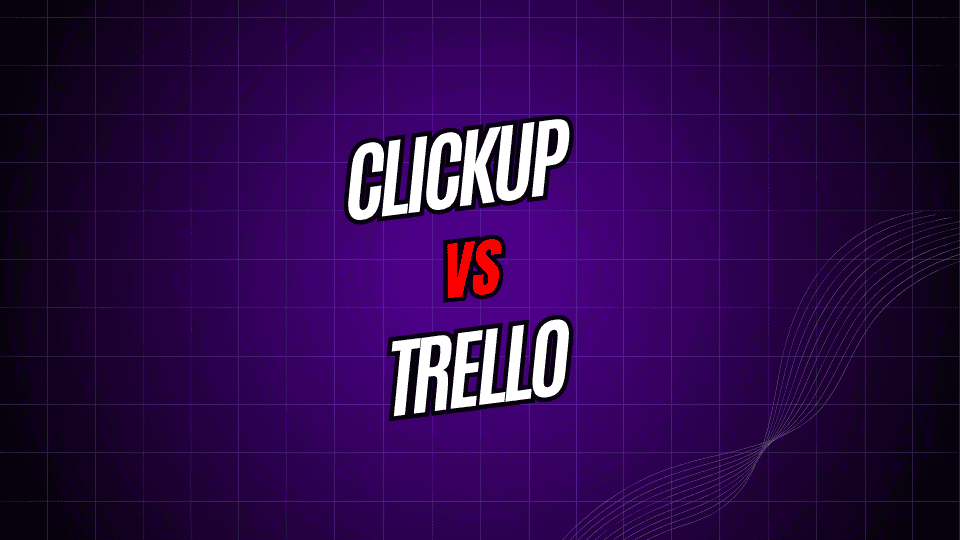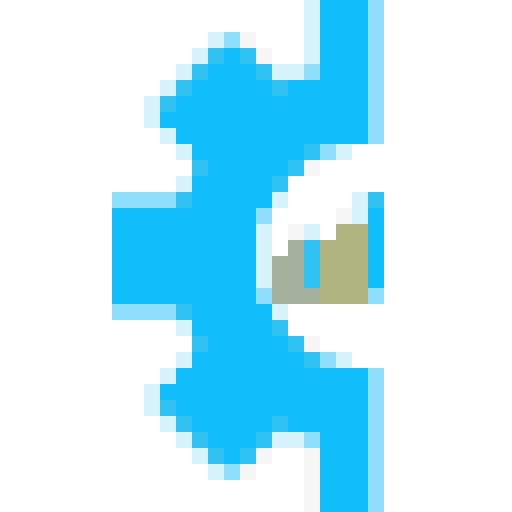
Choosing the right project management tool can seriously boost—or bust—your team’s productivity. Two names that always come up are ClickUp and Trello. Both promise to untangle your To-Do lists, but they do it in completely different ways.
ClickUp sells itself as a one-stop toolbox that can replace your Notes app, your chat tool, your calendar, and more. Trello, on the other hand, sticks to a clean, card-and-board vibe that feels just like a digital Kanban board. So, which one actually turns your to-dos into to-dones best?
This side-by-side comparison digs into everything that matters: must-have features, pricing plans, user vibes, and the project types each tool does best. When you finish reading, you’ll know exactly which one suits your team in 2026.
What is ClickUp?
ClickUp first rolled out in 2017 with a bold promise: say goodbye to every other productivity app your team is juggling. The tool bundles task lists, docs, goal trackers, and chats into one single space.
Inside the platform, you can switch between list, board, calendar, or Gantt views so the project looks the way you need it to. Build your own custom fields, set up automatic task handlers, and plug into more than 1,000 other apps with a single click. ClickUp also carries time-tracking gadgets, colorful reporting dashboards, and a whiteboard space to brainstorm without jumping tabs.
Teams of all sizes, from one-person startups to massive enterprises, lean on ClickUp every day. What makes ClickUp so popular is its flexibility. You can tweak almost every corner of your workspace to fit your needs. But all that choice can feel like a puzzle to new users.
What is Trello?
Trello has been part of Atlassian since 2017, and it earned its fans thanks to its no-fuss design. You manage projects using boards and cards. A task is a card, and it moves from one list to another, like from “To Do” to “In Progress” to “Done.”
Inside every Trello card, you can add a description, a due date, attachments, comments, and checklists. You can invite team members, set up simple automation using Butler, and plug in Power-Ups to connect with your favorite tools.
Trello shines when you need a clear, drag-and-drop view of your work. The friendly layout needs almost no training, so small teams, designers, and anyone who wants a simple tool can start and stay productive.
Core Features Comparison
Task Management
ClickUp gives you many options to organize tasks. You can stack projects with spaces, folders, lists, and subtasks. Every task can have custom fields, multiple people assigned, a priority level, and a detailed description. Task templates let you repeat common actions, and bulk editing helps finish big updates in a flash.
Trello’s card system keeps task management lightweight and quick. Each card sits on a board and can hold essentials like due dates, labels, and files. While ClickUp offers more in-depth features, Trello’s simplicity means you can pick it up in minutes and start using it without a learning curve.
Project Views
ClickUp brings you more than 15 project views. These let you choose the best way to see your work, whether you want:
- A list view to see every detail of each task
- A board view like Trello’s classic setup
- A calendar view to focus on deadlines
- A Gantt chart to map out the project’s timeline
- A workload view to see team capacity
- Mind maps to start brainstorming
Trello sticks to its signature board view for the most part. You can see deadlines on the calendar and a timeline with Power-Ups, and it recently added a dashboard and a table view, but these options don’t feel as finished as ClickUp’s.
Collaboration Tools
ClickUp keeps teams connected through built-in chat, comments, proofing, and a digital whiteboard. You can @mention teammates, write shared documents, and edit together in real time.
Trello lets teams work together using card comments and @mentions. There’s no chat feature, but it links directly to Slack and Microsoft Teams. The commenting works well for small teams, but on big projects, the card feed can start to feel a bit crowded.
Automation
ClickUp makes it easy to set up your own workflows by combining triggers and actions. With a few clicks, you can automatically assign tasks, change statuses, notify team members, and move items to different lists whenever certain conditions are met.
Trello uses Butler to help you automate everyday tasks. You can set up rules, create buttons, or schedule commands to save time. While Butler lacks some advanced options you’ll find in ClickUp, it’s still simple enough for most basic automation tasks.
Pricing Structure
ClickUp Pricing
ClickUp has four pricing tiers:
- Free Plan: You get unlimited personal use, 100MB of storage, and basic tools for teams of up to 5 members.
- Unlimited Plan ($7/user/month): Enjoy unlimited storage, dashboards, custom fields, and advanced search.
- Business Plan ($12/user/month): This level adds time tracking, custom automation, and advanced dashboard widgets.
- Enterprise Plan ($19/user/month): Get advanced security, priority support, and features designed for larger companies.
Trello Pricing
Trello divides its pricing into three main tiers:
- Free Plan: You can create unlimited boards, cards, and lists for teams of up to 10 members, with file attachments up to 10MB.
- Standard Plan ($5/user/month): This plan gives you unlimited Power-Ups, larger file attachments (up to 250MB), and advanced checklists.
- Premium Plan ($10/user/month): This option adds a calendar view, dashboard view, advanced security features, and unlimited automation actions.
- Enterprise Plan ($17.50/user/month): Get advanced enterprise security, unlimited workspaces, and priority support for larger teams.
User Experience and Learning Curve
ClickUp User Experience
ClickUp packs a lot of features into one place, and that can make it a bit tricky for beginners. New users are often surprised by the sheer number of buttons, menus, and settings. When teams turn on several features at once, the screen can start to look busy and confusing.
Still, people who stick with it tend to turn that initial hustle into a solid payoff. After a bit of practice, they love being able to tweak workflows, save custom templates, and pull in other tools, all in one window. That level of adaptability attracts teams that want a one-stop-shop for managing projects.
Trello User Experience
On the flip side, Trello shines because it is super easy to pick up. Most people “get it” within a few minutes. Moving cards from one list to another using drag-and-drop is a basic gesture almost everyone knows. Plus, bright cards on colored lists give a quick, at-a-glance sense of where things are.
This simplicity is a double-edged sword. Teams can start using Trello right away, but if a project grows complicated—maybe because there are lots of moving parts, custom steps, or detailed information—they might feel the limits. The same boards that feel clear at first can start to feel crowded and less detailed when the work gets heavier.
Integration Options
ClickUp Integrations
ClickUp connects with more than 1,000 apps, so you can keep everything in one place:
- Chat tools: Slack, Microsoft Teams, Discord
- Dev platforms: GitHub, GitLab, Bitbucket
- Design programs: Figma, Adobe Creative Suite
- Time trackers: Toggl, Harvest, RescueTime
- CRM systems: HubSpot, Salesforce, Pipedrive
You’ll also find built-in links for Google Workspace, Outlook, and Zoom. Most of these integrations work in real-time so you don’t have to worry about moving data by hand.
Trello Integrations
Trello uses Power-Ups to hook into hundreds of tools:
- Project extras: Gantt charts, time tracking
- Chat platforms: Slack, Microsoft Teams
- Dev services: GitHub, Bitbucket
- Design apps: Figma, InVision
- Business tools: Google Drive, Dropbox, OneDrive
Though Trello has fewer total integrations than ClickUp, the Power-Ups let you turn on only the features you need. The quality of these links stays consistent across the board.
Performance and Reliability
ClickUp Performance
ClickUp can slow down if your team has a lot of data or if workflows get complex. Some users notice delays when opening dashboards or switching between views. The company has made big strides to speed things up over the years, but how fast it runs still depends on how you use it.
The mobile app offers nearly all the desktop features, yet it can feel a bit slower than the web app. Offline features are limited, which may challenge remote teams when the internet signal is uncertain.
Trello Performance
Trello is quick no matter the platform. Its clean layout helps pages load fast, and clicks, drags, and drops are always smooth. Even boards packed with hundreds of cards never lag.
The mobile app does a solid job of copying the web feel, and it supports offline viewing and simple edits. This steady performance is great for teams who switch between devices or who sometimes work off a shaky connection.
Ideal Use Cases
When to Choose ClickUp
ClickUp shines when you:
- Handle complex projects needing precise planning and various viewing options
- Have large teams needing strong collaboration and reporting tools
- Want to combine several apps into one platform
- Work remotely and need robust communication and document storage
- Must design custom workflows and use automation
When to Choose Trello
Trello works best when you:
- Manage simple projects with clear, linear tasks
- Have a small team that prioritizes simplicity
- Like a visual, card-based way to see and move tasks
- Need to start projects quickly with little setup
- Are new to project management tools and want a gentle learning curve
Making the Right Choice for Your Team
Pick ClickUp if you foresee needing a powerful platform that scales with you. It’s ideal for teams managing intricate projects, needing deep reporting, or wanting to minimize the number of apps they use. The upfront time for training and setup is worth it for teams ready to embrace its full potential.
Choose Trello if you want an easy-to-use tool that you can pick up and start using in minutes. It’s perfect for small teams, freelance designers, and anyone who needs to organize work fast and without fuss. The board-and-card system lets you see everything at a glance, making it great for moving tasks forward without diving into menus and settings.
Try both ClickUp and Trello for a week, focusing on a made-up project. Build a project in both places and see how each one feels day-to-day. Notice which one you and your teammates stick with; that will tell you which tool fits your habits and needs.
